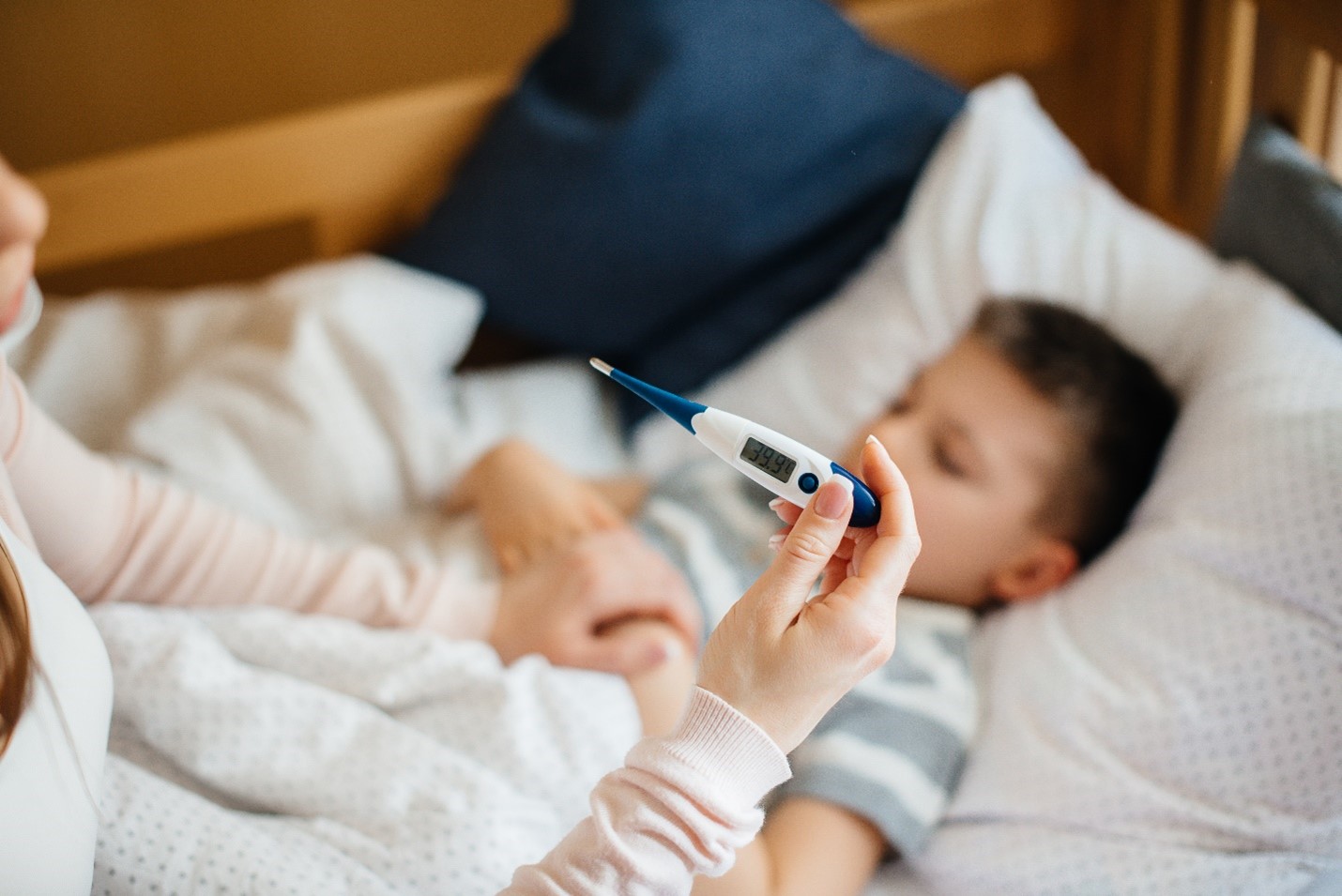Why Do Babies Get Fevers So Often?
A fever isn’t a disease—it’s the body’s alarm system. When germs slip past the first line of defense, the immune response nudges core temperature upward to slow viral and bacterial growth. The American Academy of Pediatrics explains that most mild baby fevers are linked to routine infections such as colds, ear aches, or stomach bugs (AAP fever overview). For newborns, however, even a small temperature rise can signal a more serious problem because their immune systems are still developing.
What Counts as a Fever?
| Age Group | Call It a Fever | Urgent Threshold |
| 0–3 months | ≥ 100.4 °F (38 °C) rectal | Immediate call to pediatrician |
| 4–24 months | ≥ 100.4 °F (38 °C) | ≥ 104 °F (40 °C) → |
| same‑day visit | ||
| 2–5 years | ≥ 100.4 °F (38 °C) | ≥ 105 °F (40.6 °C) → |
| ER if unresponsive |
Rectal readings remain the gold standard for infants under six months, according to the Centers for Disease Control and Prevention (CDC thermometer guidelines).
Tip: Digital forehead strips can miss high fevers—always double‑check with a calibrated rectal or oral device.
Home‑Care Checklist for Mild Fevers
1. Keep Fluids Flowing
Breast milk, formula, or an oral rehydration solution prevents dehydration. Offer feeds every two hours when awake.
2. Dress for Comfort
Choose one light cotton layer; overheating can push temperatures higher.
3. Use Medication Wisely
For babies older than three months, acetaminophen (15 mg per kg every 4–6 hours) is safe if approved by your doctor. Avoid ibuprofen under six months.
4. Skip Cold Baths
Rapid cooling tricks the brain into shivering, which may raise temperature again. A lukewarm sponge wipe is gentler.
5. Monitor, Don’t Hover
Retake temperature every four hours, note diaper output, and watch behavior. A playful baby with 101 °F is less worrying than a limp one with 100 °F.
Red‑Flag Symptoms: When to Worry
- Age under 3 months with any fever ≥ 100.4 °F (38 °C).
- Weak cry, poor eye contact, or extreme drowsiness.
- Labored breathing, grunting, or nostril flaring.
- Rash that spreads quickly or does not blanch when pressed.
- Dehydration signs: fewer than four wet diapers in 24 hours, dry mouth, or sunken soft spot.
- Seizure or uncontrolled shaking lasting more than two minutes.
Call our office right away or head to the nearest emergency department if any of these appear.
How Antipyretics Work—and When They Don’t
Fever reducers block prostaglandin production, lowering the “thermostat” in the brain’s hypothalamus. They don’t cure the infection itself. If a baby spikes a high fever again soon after dosing, it may point to a stronger bug—think influenza, RSV, or even an early urinary‑tract infection, which accounts for up to 7 percent of unexplained infant fevers (UTI data).
Fever Myths Parents Still Hear
Myth 1: “Teething causes high fevers.”
Reality: teething may nudge temps up by 0.5 °F, not the 102 °F range.
Myth 2: “A cool room stops fevers.”
Reality: external temperature has little effect on an internal immune response.
Myth 3: “You must starve a fever.”
Reality: babies need calories for immune cells; keep feeding on cue.
Safe Thermometer Use Step‑by‑Step
- Sanitize tip with alcohol; let dry.
- Lubricate rectal probe with petroleum jelly.
- Insert ½–1 inch, keeping baby still.
- Wait for beep; note exact reading and time.
- Clean with soap and warm water.
Store a second thermometer for oral use in older siblings to avoid cross‑contamination.
Practical Fever Action Plan
| Situation | Parent Action | Clinic Response |
| Baby <3 months hits 100.4 °F | Call immediately | Nurse triages for automatic same‑day visit |
| Baby 4–12 months hits 102 °F but playful | Start home‑care plan; monitor | Advice line check‑in within 6 hours |
| Fever ≥104 °F or red‑flag symptom | Head to urgent care/ER | In‑house team pre‑alerts hospital |
Learn more on our Sick Visit Services page.
Beyond the Temperature: Trust Your Instincts
You know your child’s baseline better than anyone. If your gut says something is off—even before the thermometer confirms—pick up the phone. Quick assessment saves worry, and in rare cases, can catch illnesses like meningitis before they escalate.
External Resources for Peace of Mind
- Fever and Your Baby – Mayo Clinic’s parent guide to temperature basics.
- When to Seek Emergency Care – Texas Children’s Hospital checklist for infants.
Both links open in a new tab and provide physician‑reviewed detail you can trust.
Same‑Day Help Is One Click Away
Same‑day sick slots open 8 a.m. daily—reserve yours now and let our board‑certified pediatricians check your baby’s fever in person.







